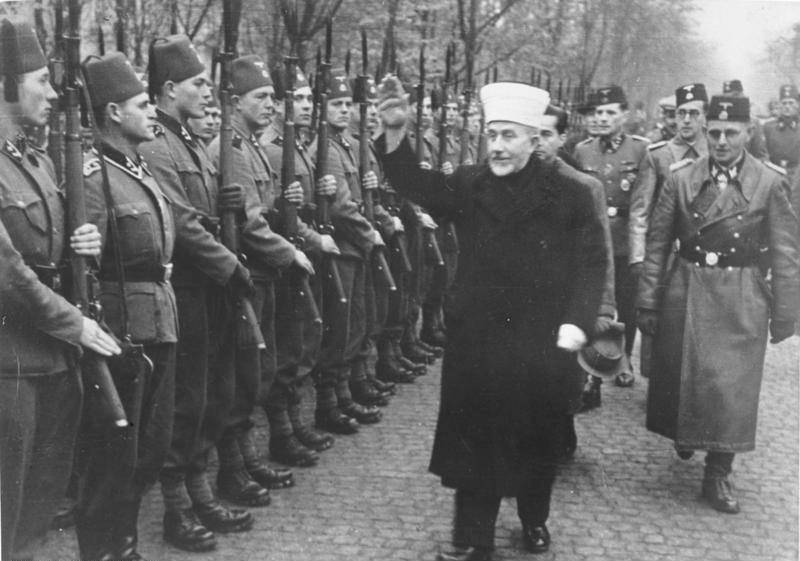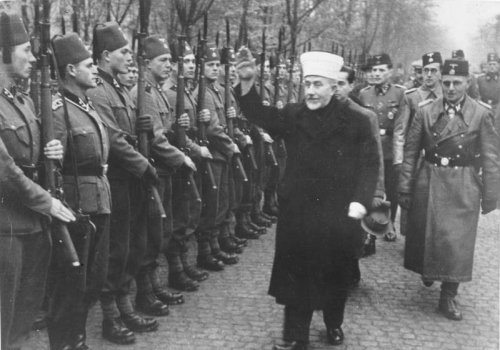Tucked away into oblivion, undisturbed by the curiosity of historians, very little is known of the Arabs who shared cells with the Jews of Nazi Germany, having been forced to leave their home countries due to financial situations or foreign occupations. During World War II, these Arabs suffered alongside their Jewish cellmates, yet without so much as a footnote on them in world history.
Colonial Codes
In the book In the Shadow of the Moon: Arab Inmates in Nazi Concentration Camps, historian Gerhard Hopp claims that these Arab inmates were classified under the provision for French dependency, as they were considered citizens of French colonies in North Africa and the Near East. Hopp further contends that there were those who hid under the guise of being Italian or Spanish in order to escape this fate. This colonial code was applied throughout Europe, and as such was applied to Arab victims of the Third Reich, thereby contributing to the erasure of many of their ethnic or national identities, excluding them as members of the colonial metropolises. Hopp further indicates that the Arab-Israeli war contributed to placing Arabs in the Nazi-sympathizing camp, rather than classing them as victims. However, based on a number of factors, such as names and places of birth, Hopp confirmed that the number of Arab inmates in Nazi concentration camps was at minimum no less than 1,000. Of those, he was able to secure accurate information about 450 Arab inmates, primarily Muslims, although there were some Christians and Jews among them too.
Concentration Camps and The Identities of Inmates
There were Arabs in almost all of the Nazi concentration camps, as thirty-four were documented in Auschwitz, twenty-one in Bergen-Belsen, 149 in Buchenwald, eighty-four in Dachau, thirty-nine in Flossenburg, and twelve in Gross-Rosen. There also were three were documented in Hinzert, sixty-two in Mauthausen-Gusen, thirty-nine in Mittelbau-Dora, thirty-seven in Natzweiler-Struthof, 110 in Neuengamme, twenty-five in Ravensbruck, one in Kaiserwald, forty-two in Sachsenhausen, and four in the Lublin/Majdanek extermination camp. The majority of these Arab inmates were of North African origin, the 248 of them found to be Algerian, while twenty-seven were Moroccan, twenty-two were Tunisians, five were Egyptians and four Iraqis and Palestinians respectively. There was also one inmate from each of Lebanon, Syria. Some of these Arabs were Jewish, originating mainly from Libya and Yemen. Among these inmates were some female detainees as well.
Reasons for Arrest
Immediately after the beginning of the war, Nazi forces executed a wave of arrests across Germany and Austria, targeting citizens of what were considered to be enemy states. This wave of arrests included over 100 Arabs, with Egyptians at the forefront, in addition to Iraqis, Lebanese, and Algerians. Hopp further notes that the Nazi forces arrested a number of Egyptians in the Wurzburg camp near Nuremberg, as hostages to exchange for German prisoners arrested by the British in Egypt, whereby every two Egyptians were exchanged for one Germany POW in Egypt. These Egyptians prisoners were not released from the camp until June 1941, due to major propaganda battles, and a number of them suffered from persistent illnesses. Hopp additionally notes that a number of other inmates were immigrants to France, and were placed in concentration camps on the basis of accusations of fighting Nazis as part of, or supporters to, the French resistance movement. Others were flotsam amid the POWs of the defeated French army, where they had been serving in the army due to the conscription in place at the time.
The majority of the Arabs in France were arrested by SS forces in Campagne near Paris, as well as in Bordeaux, Lyon, Toulouse, Valence, and Schirmeck. They were also arrested in Austria and other areas in Germnay, such as Frankfurt, Main, Karlsruhe, and Cologne, while some Arab inmates were moved from Brussels and Tunisia. About five Arabs never made it out of the camps alive, with tuberculosis and general physical affliction fielded as their primary causes of death. Some of the inmates suffered from full incapacitation, and at least one was executed; a Moroccan man named Mohamed Bouaiad who met his fate in the gas chambers of the Mauthausen-Gusen camp, according to Hopp’s book. Hopp further confirms that the Arab inmates were not treated as the exceptions in the camps, but rather were subject to the status quo that was Nazi brutality, not having been classed among the privileged few. As such, there is no reason to believe they were spared any of the ordeals that Jewish inmates were subjected to.
The Media Apparatus and the Scarcity of Information
Indeed, records have shown the existence of Arab victims in the Holocaust, despite the scarcity of information on them, professor of modern and contemporary history, Jamal Shakra, tells Raseef22. He attributed the general negligence of these Arab victims in Nazi concentration camps to the frailty of Arab countries during World War II and the ensuing period, as they had not yet been freed of colonialism, and as such were in no position to defend their citizens who ended up in concentration camps. The Arab inmates in these camps lived in Europe, particularly in Germany.
Many of them were wrongfully arrested due to assumptions of some kind of association between these Arabs and the Jewish population, or that they were somehow collaborating with the Allies’ armies. Thus, many were killed or met the same fate as the Jews in the Holocaust, according to Shakra. Meanwhile, Mohamed Afifi, Professor of Modern History at Cairo University, tells Raseef22 that Hitler despised all Semitic peoples, believing them to be inferior to the Aryan race. He believed them to be a hindrance to progress, and as such it was expected for Nazi concentration camps to include Arabs, on the basis that they too are Semites. Afifi moreover notes that the lack of available information on the status of Arabs in Nazi concentration camps, not to mention the lack of studies on them and their fate, contributed to the squandering of their historical rights.
Contesting Theories
However, Essam el-Dessouky, Professor of Modern History at Helwan University, tells Raseef22 that he never came across Arab victims of the Holocaust or Nazi concentration camps, despite having rea extensively on the era.
He notes that while it was possible there may have been some Arab Jews among the victims, he however believes it to be unlikely that they included Muslims and Christians.
Moreover, Professor of Modern and Contemporary History at Fayoum University Abdel Moneim el-Gemei’i concurs, telling Raseef22 that all he knows about the context was that the Grand Mufti of Jerusalem at the time, Amin al-Husseini, met Hitler in Germany and supported him against the Allies. However, el-Gemei’i says there is no information available on whether there were Arab victims in the Holocaust or in concentration camps.
Raseef22 is a not for profit entity. Our focus is on quality journalism. Every contribution to the NasRaseef membership goes directly towards journalism production. We stand independent, not accepting corporate sponsorships, sponsored content or political funding.
Support our mission to keep Raseef22 available to all readers by clicking here!
Interested in writing with us? Check our pitch process here!






